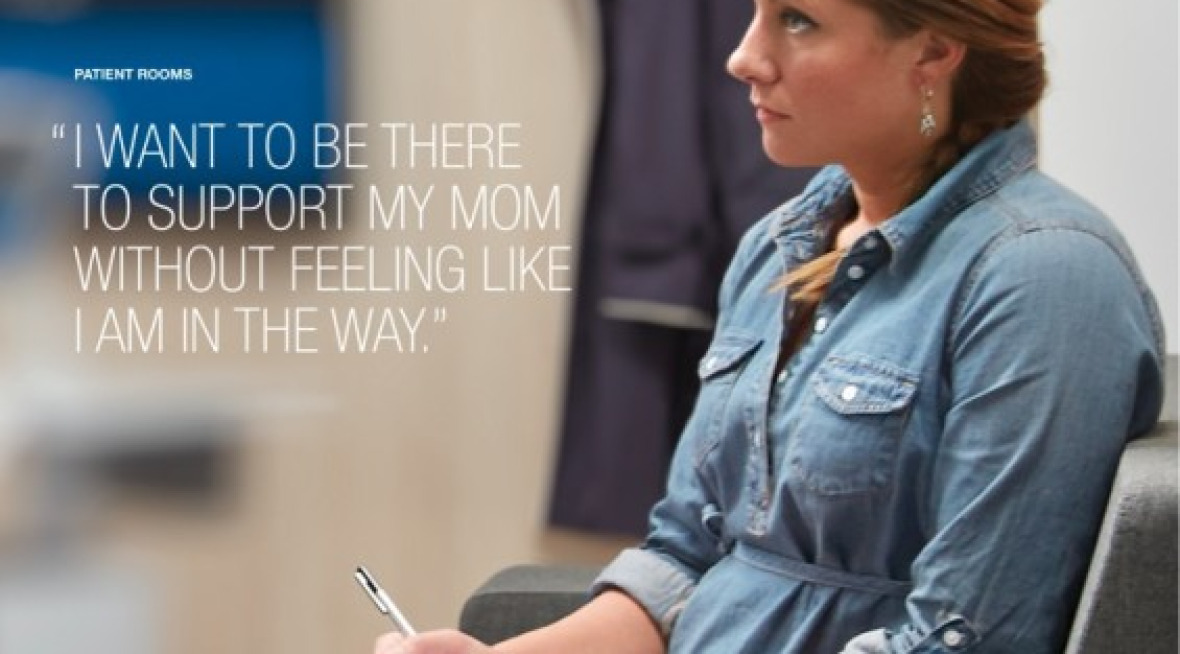When you think of the point of care, where the majority of healthcare activities are administered, it’s not likely that you think of a waiting room or a well-lit atrium. You think of the patient room – that’s where the action happens, the vast majority of doctor-patient interactions, and the most important moments on many healthcare journeys.
Understanding the many activities that occur in patient rooms is the basis of people-centered, evidence-based design solutions. When the elements of people, place, and technology are all considered, the result can be patient rooms that connect people and information effectively, empower patient healing and support the wellbeing of everyone who uses the space. The result is simple: better, more connected care.
Steelcase Health’s insights on the patient room:
- Without any space to spare, multi-functionality is essential in patient rooms.
- Bedside teaching and learning is an essential part of high-value, patient-centered care.
- Successful healthcare includes family or other support persons as information sources, patient advocates and care partners.
- Hospitalization increases feelings of vulnerability, intensifying needs for choices and personal comfort in the space.

A Patient-centered Design Approach
This patient-centered design approach is often overlooked or pushed to the background. Yet, it is one of the most crucial elements of a successful healthcare facility. In order for clinicians to provide the best care possible, and for the patient to respond to it in the intended way, it is necessary to start with an optimal space for the care to take place. A recent article in Hospital Build & Infrastructure touched on the importance of this design focus:
Patient wellbeing is paramount to interior designers in the healthcare sector. Ensuring comfort and welfare for patients, this ranges from clean surface finishes across all floors, through the type of lighting in the operating rooms, to the color of the walls. Hospitals must operate to an extremely high standard for all users so, as well as aesthetics and furniture, physical internal architecture and wayfinding become fundamental to the design process.
Not to be ignored in this patient room scenario are the providers of care. As we’ve written about before, the job of the nurse is one of the most physically taxing there is. It is vital to design and implement a patient room with their best interests in mind as well:
The interior designers also have to take the needs of the staff into account, due to the high intensity and demanding work required of them. It is crucial that doctors and nurses are given priority when designing a number of the spaces. As these critical caregivers spend a large amount of time in the hospital the designers should try to ensure that the environment created for them is as comfortable as possible. Efficiency is also key as nurses can walk up to five miles in a 12-hour shift.
An ideal scenario is an environment that accounts for the needs of patients, their loved ones, and the clinicians providing care. In this time of great change in healthcare, we’re working to make those ideal experiences more and more common.
Read some more of our current thinking on patient-centered care:
- Physical Exams Still A Crucial Part of Healthcare’s Future
- Patient-Centered Care: As Big As The World Cup
- A Focus On Clinician Privacy In The Latest 360 Magazine
The post A Time for Change in the Patient Room appeared first on Steelcase Health – Healthcare Furniture.
